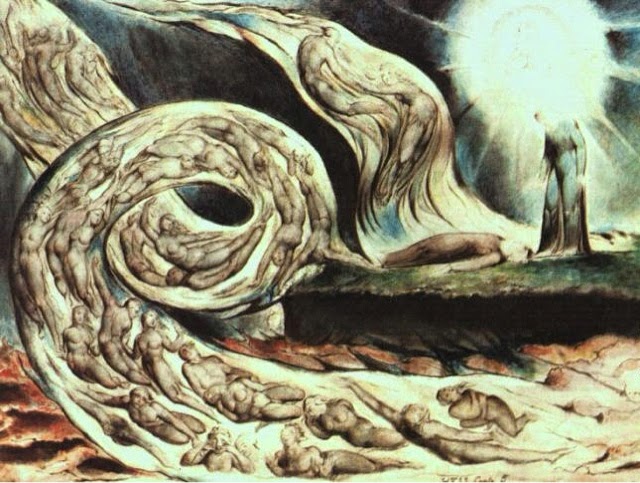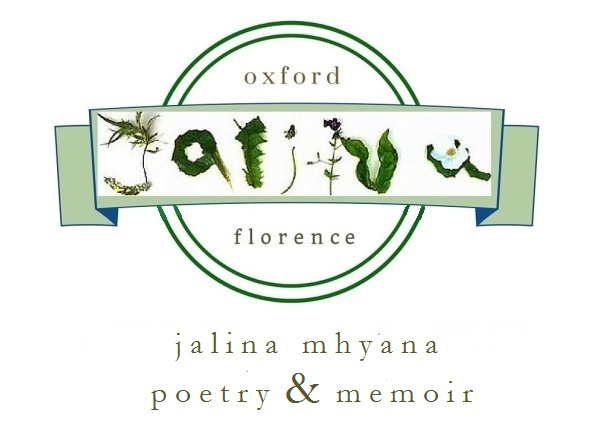 |
“The Lovers’ Whirlwind” by William Blake; Blake’s whirlwind takes place
in the second circle of hell as described in Dante’s Divine Comedy |
I’ll be reading a poem in front of this painting at the Ashmolean’s Blake exhibit this Saturday, January 24th. I’ll be reading with Oxfordshire poets Julie Forth, Mary Stableford, Merryn Williams, Nick Owen, and Derek Summers. I can’t wait to hear their interpretations.
I listened to the Divine Comedy on Librivox on a trip through Italy last year; Cantos I-V were especially divine, read by Cori Samuel, whose voice I became very much infatuated with.
I wrote my Blake-inspired poem in the dark last night. I enjoy writing in the dark with my eyes closed. I see the words in my mind more intimately, more immediately, than when they’re on paper, or on a laptop, far away at the end of my arm. In the dark there is no arm. The words are only legible in my head.
Here’s the rough draft I wrote in the dark (I can usually manage to untangle the words the next day):

And here is a little sneak-peek at the first 4 lines of my poem all dressed up to go to the museum:
Canto V, La Commedia
“She saw the couches of the dead, and where the fibrous root
Of every heart on earth infixes deep its restless twists”
– William Blake, The Book of Thel
Sin begins with a kiss, then sinks
to a second circle where the wind is nude
and has a million mouths—a dirge
deafens, each lung clenched in a cry.
_____________________________
The Book of Thel is my favorite Blake book. I find much of his work sing-songy and cloying (I have to agree with Byron here) but his mystical/ visionary work can be breathtaking and brutal; all albumen and acid.
I’ve been reading Ackroyd’s Blake biography and Dante in English, an incredible anthology that “explores the variety of encounters between Dante and English-speakers across more than six centuries.” The anthology, edited by Eric Griffiths and Matthew Reynolds, boasts one of the best introductions I’ve ever read. It’s a book in and of itself, but so beautifully written. I have it by my bedside and re-read my favorite passages from the introduction, as well as various writers’ English translations, sporadically.
The book reminds me of Hofstaedter’s Le Ton Beau de Marot, one of my all-time favorite books about artistic license in poetry translation.
Sean bought me Dante in English as we drove through Florence mostly because he knew I’d love the cover: an illustration by Tom Phillips, the English artist who created a Humument (I was lucky enough to speak to Phillips at the Oxford Literary Festival years ago and get a glimpse behind the palimpsest of illustrations). a Humument is one of my favorite experiments in altered books and found poetry.
Sean
pricked our names into the pages of Dante in English in raised braille-like punctures, so I could read his dedication with my fingertips.

Opening the book is like having someone shake Italy over my head. I’m left with a bedful of ephemera: a papal coin from the Vatican, a pornographic statue from Pompeii, a sprig of rosemary, a hotel bill from Rome, and directions to our friend’s trullo in Puglia. Actually, now that I flip through, I see there are half a dozen postcards of statues copulating. Worse things could fall into bed with me.
As I write this, Sean is sleeping next to me and kitty is napping on the radiator. I’m drinking liquorice tea (that Sean whittled from actual liquorice sticks and steeped in a coffee press devoted to herbs and spices). I love the taste of liquorice tea, how it’s a ghost that sneaks past the tongue – you only catch it once it’s gone. Try it; it’s a tease of a tea.
No honey needed.






a very good read
LikeLike
Thank you Nick ~ I'm so pleased you stopped by!
LikeLike